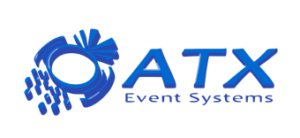Why Your Event Needs a Technology Stack
 The expression “technology stack” has different meanings. It is both a descriptor and a tool that event planners can use to comprehend the part that particular technologies play in their events. Imagine a technology stack that can enable planners to settle on better technological choices, address challenges, and reduce costs. Using a technology stack is one of the fundamentals to producing turnkey style events that can more money than you thought possible. Click here to learn more about turnkey events or keep reading about technology stacks by reading on below.
The expression “technology stack” has different meanings. It is both a descriptor and a tool that event planners can use to comprehend the part that particular technologies play in their events. Imagine a technology stack that can enable planners to settle on better technological choices, address challenges, and reduce costs. Using a technology stack is one of the fundamentals to producing turnkey style events that can more money than you thought possible. Click here to learn more about turnkey events or keep reading about technology stacks by reading on below.
WHAT IS A TECHNOLOGY STACK?
A technology stack, also known as a solution stack or software stack, can allude to the greater part of the components that would make a system work. An event website, for instance, requires an operating system, web server, database, and a programming language.
Another approach to think about a technology stack is as a bundle of software. For example, inside the Microsoft Office “stack,” people can discover Word, Excel, PowerPoint, and Outlook. Each of the product items performs distinctive tasks, yet they all cooperate on the Microsoft platform.
A third way to think about the technology stack idea is as a representation of all the software needed expected to accomplish a goal. Stacks could be produced for promoting, sales, attendee experience, gathering real-time data, or mapping the client journey to give some examples.
While it’s possible that the software engineers who coined “technology stack” were alluding to software, a broader definition may also incorporate hardware.
WHY EVENT TECHNOLOGY ARE STACKS IMPORTANT FOR PLANNERS?
Event planners can profit the most from tech stacks that take into account standard attendee needs. Consider, for example, a tech stack that recognizes all of the technology that the attendees are required to use for a one event:
- Registration site
- Mobile app
- Registration stand
- Matchmaking and Appointment setting software
- Networking app
- Wi-Fi
- Surveys and Q and A
- Charging stations
- Wearable beacons
By viewing this stack, planners can begin to ask questions based off of it. Is this a lot of technology for attendees to learn all at once? Do any of the features of tech stack overlap? Are there any basic attendee prerequisites that aren’t being addressed in the current stack?
An event tech stack is additionally a stock of existing tools. It can create insight on some essential themes:
Technology expenses: Stacks can enable planners to settle on choices about whether another product will be a solid match or an unnecessary cost. In the event that, for instance, the present stack tends to 90% of attendees’ needs, what amount should the organization spend to get to 100% and where would it be a good idea for them to spend it?
Process automation: The implementation of a stack can enable event planners to see where data integration could enhance their attendees’ experience. Suppose that an attendee enrolls and says that they are interested in water purification in underdeveloped countries. In the event that that information was put into the matchmaking app, it could be possible to set up appointments for the attendee with other attendees that share the same interest.
Strategic Direction: A technology stack speaks to the key decisions of the event planner. For example, an event planner might want to include a networking app in the tech stack because they want better attendee relationships as as goal of the event. In any case, the turn around can also be true. Looking at the different benefits the stack can provide (for instance, give a better comprehension of the attendee experience through wearable beacons), can event planners look toward some new and particular results for the event?
WHERE AN EVENT TECHNOLOGY STACK CAN TAKE PLANNERS
An event technology stack is an approach to match the objectives, procedures, and budget of an event with the developing number of event technologies accessible to meet them. It can challenge event planners to consider criteria such as the best stack, most profitable stack, or most integrated stack. As technology continues to evolve, planners require more effective ways comprehend the event technology ecosystems they create. Thus, creating a technology stack can enable them to stay ahead of the technology curve while still putting on budget-friendly events.


